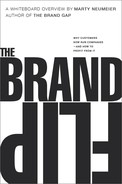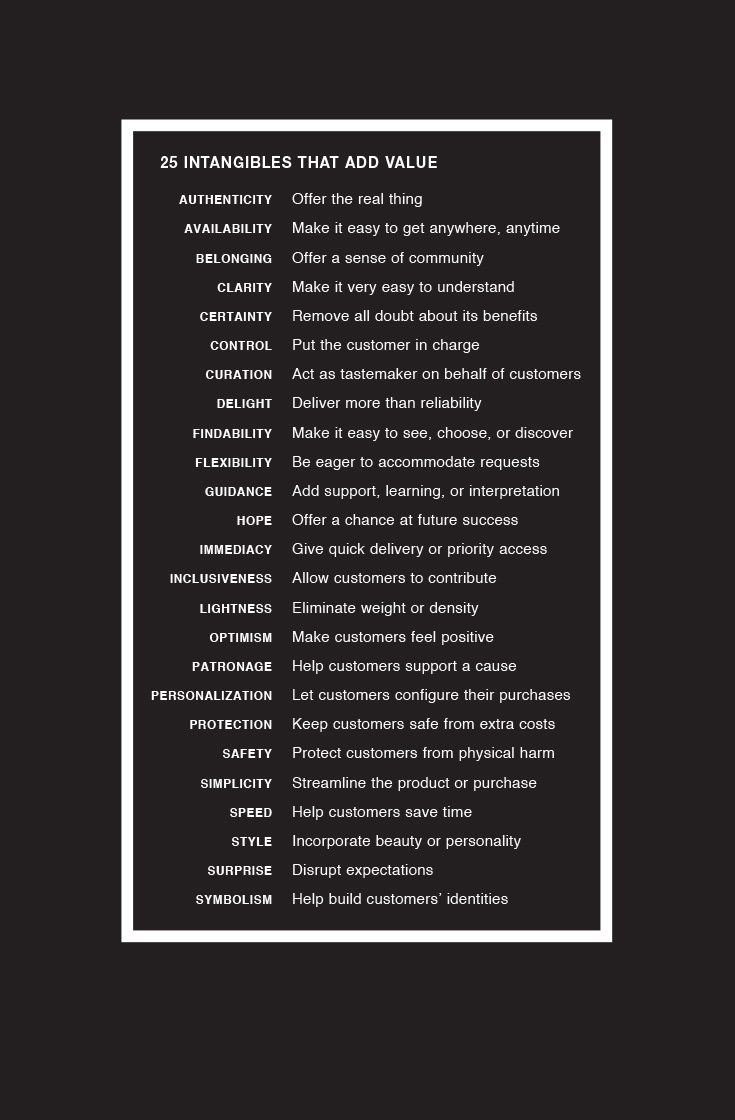TANGIBLE  IMMATERIAL
IMMATERIAL
In my family, holiday presents are shrinking. Maybe you’ve noticed the same thing in yours. We used to buy each other presents like sweaters, books, toys, bath soap, and perfume. Now we buy gift cards—for clothing, media, gadgets, spa days, and charitable donations. All that awaits beneath the tree is a thin layer of envelopes. What gives?
We’re not being lazy. We know instinctively that, while sweaters and books deliver great experiences, the pleasure of a gift can be doubled if we add another experience on top of it—the intangible bonus of shopping, choosing, or having more control. As Liquid Agency chief creative officer Alfredo Muccino puts it, technology has flipped our mindset from “I need stuff” to “I want an experience.”
Beneath this trend, industry is undergoing a massive migration from a material-based economy to a digital one. We’re removing paper from books, polycarbonate from music, and physical shelving from stores. Many people would now rather travel than own a home. Some are ditching their cars in favor of services like Zipcar and Uber. And when cars start driving themselves, who will want a garage when we can just whistle for our rides?
In his thought-provoking book WHAT TECHNOLOGY WANTS, Kevin Kelly points out that in the past six years the average weight per dollar of U.S exports had fallen by half. “We are steadily substituting intangible design, flexibility, innovation, and smartness for rigid, heavy atoms,” he says.
This was foreseen by Alvin Toffler in his 1991 book POWERSHIFT. He predicted that the power of immaterial value would extend even to money, calling it nearly a “religious conversion” from “a trust in permanent, tangible things like gold or paper to a belief that even the most intangible, ephemeral electronic blips can be swapped for goods and services. Our wealth,” he said, “is a wealth of symbols,” Both our money and our goods are becoming intangible.
A recent study of the S&P 500 showed that the monetary value of intangible assets had increased from 17 percent to 80 percent over a 30-year period. The largest of these company assets were brands. What has driven the increase is an improved ability to connect emotionally with customers through qualities such as immediacy, personalization, self-identity, and empowerment.
Until we can purchase essentials like food, shelter, clothing, and machines as software code, we’ll need our industries to produce tangible goods. The goods themselves may be commodities, but the intangible benefits wrapped around them will make them unique and empowering.
A recent study shows that three-quarters of customers think companies should work to improve the quality of their lives. Only one-quarter believe that companies are succeeding. There’s plenty of room at the top.
Remember our definition? A brand is a customer’s gut feeling about a product, service, or company. But there’s more. A successful brand can become a touchstone in a customer’s life—a vivid symbol of what’s useful, delightful, and even magical. When a product becomes a symbol, the symbol becomes the product. It can offer tremendous value as a building block in a customer’s personal identity.

